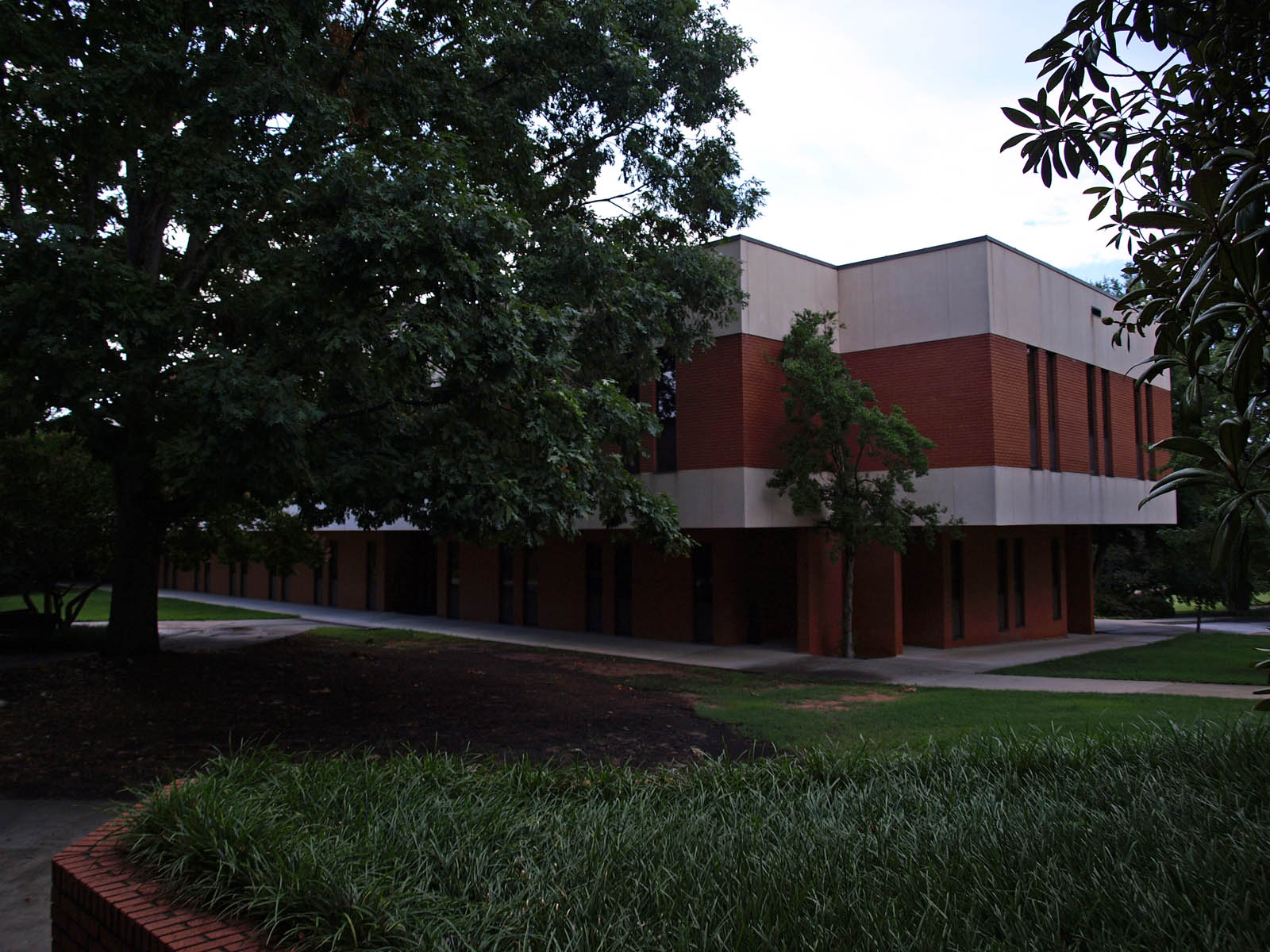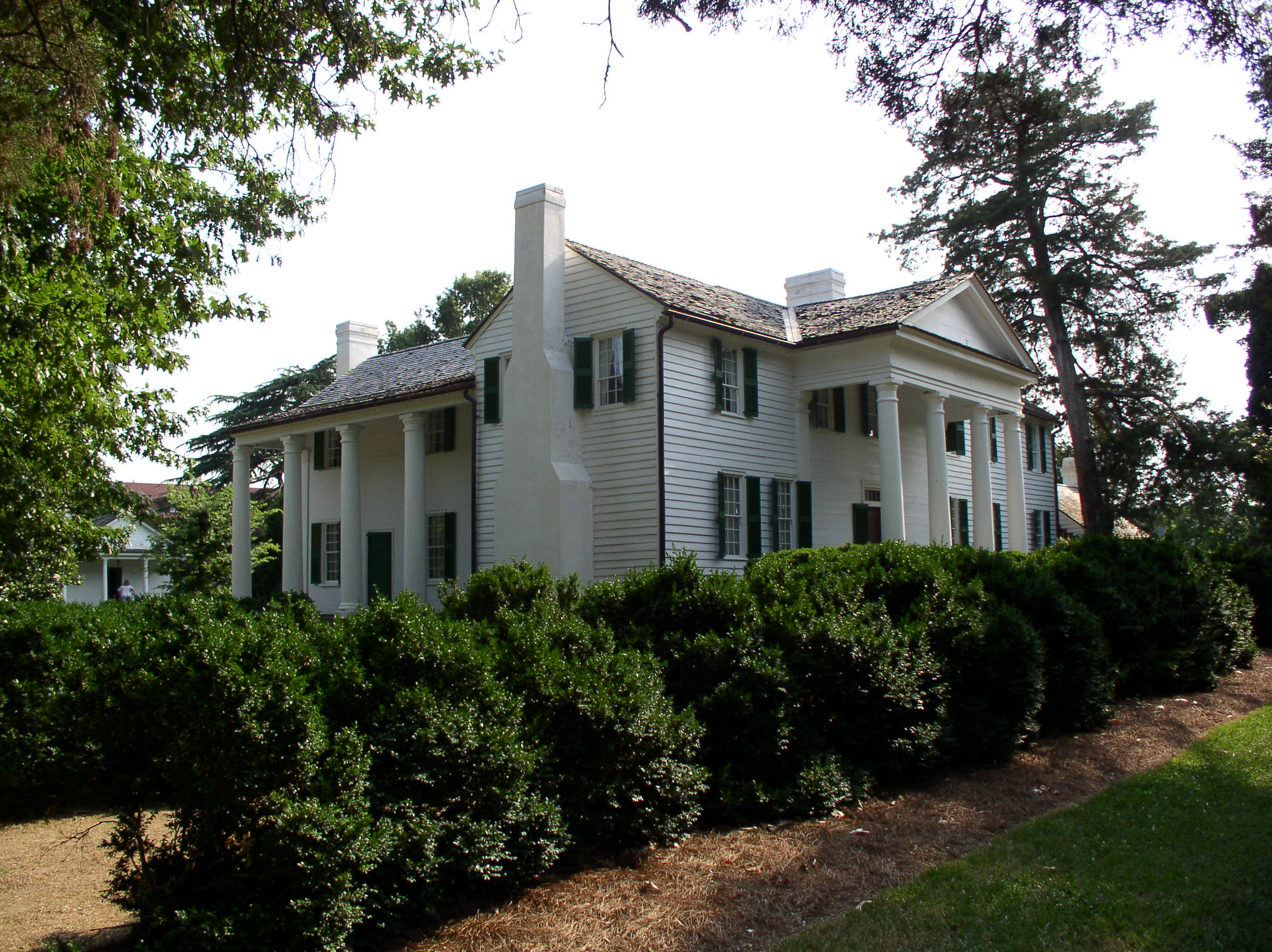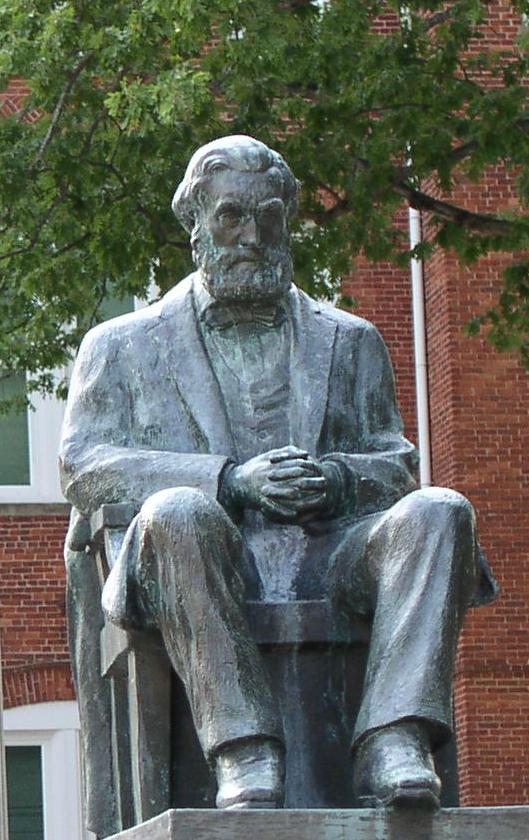|
Tillman Hall At Clemson University
Tillman Hall is the most famous building on the Clemson University campus. The 3-story brick building with a clock tower is located on a hill overlooking Bowman Field. Tillman Hall is currently the home of the College of Education. Connected to Tillman Hall is the Tillman Auditorium, a 755-seat auditorium that formerly was a campus chapel named Memorial Chapel. Tillman Auditorium is used primarily for lectures and seminars, small concerts, pageants and dances. The building was named after Benjamin Tillman, a staunch opponent of civil rights, and is under proposal to be renamed to its original name, the Main Building, commonly called “Old Main”. On June 12, 2020 the proposal was sent to the SC State legislature to rename the building, pending a two thirds majority vote in both the state House and Senate. History Tillman Hall was nationally registered as part of Clemson University Historic District I. It is one of the few remaining buildings from Clemson University's orig ... [...More Info...] [...Related Items...] OR: [Wikipedia] [Google] [Baidu] |
Bruce & Morgan
Bruce & Morgan was an American architectural firm based in Atlanta. It was established in 1882 as the partnership of architects Alexander Campbell Bruce (1835-1927) and Thomas Henry Morgan (1857-1940). History Bruce & Morgan were the successors to Parkins & Bruce. Senior partner William H. Parkins was the first architect to practice in postbellum Atlanta, having moved there in 1868. Although the firm designed a range of buildings types and sizes, the firm largely focused on designing public buildings (courthouses, schools, religious buildings, etc.). The firm's major projects often contain Romanesque Revival architecture, Romanesque elements such as bell towers and attempts at classical architectural symmetry. In the twentieth century, the firm's projects shifted towards steel framed skyscrapers in Atlanta. In 1903 the partnership was expanded to include John Robert Dillon, formerly of Chicago, and became known as Bruce, Morgan & Dillon. Bruce withdrew from the partnership in 190 ... [...More Info...] [...Related Items...] OR: [Wikipedia] [Google] [Baidu] |
Carillon
A carillon ( , ) is a pitched percussion instrument that is played with a keyboard and consists of at least 23 cast-bronze bells. The bells are hung in fixed suspension and tuned in chromatic order so that they can be sounded harmoniously together. They are struck with clappers connected to a keyboard of wooden batons played with the hands and pedals played with the feet. Often housed in bell towers, carillons are usually owned by churches, universities, or municipalities. They can include an automatic system through which the time is announced and simple tunes are played throughout the day. Carillons come in many designs, weights, sizes, and sounds. They are among the world's heaviest instruments, and the heaviest carillon weighs over . Most weigh between . To be considered a carillon, a minimum of 23 bells are needed; otherwise, it is called a chime. Standard-sized instruments have about 50, and the world's largest has 77 bells. The appearance of a carillon depends ... [...More Info...] [...Related Items...] OR: [Wikipedia] [Google] [Baidu] |
Clock Towers In South Carolina
A clock or a timepiece is a device used to measure and indicate time. The clock is one of the oldest human inventions, meeting the need to measure intervals of time shorter than the natural units such as the day, the lunar month and the year. Devices operating on several physical processes have been used over the millennia. Some predecessors to the modern clock may be considered as "clocks" that are based on movement in nature: A sundial shows the time by displaying the position of a shadow on a flat surface. There is a range of duration timers, a well-known example being the hourglass. Water clocks, along with the sundials, are possibly the oldest time-measuring instruments. A major advance occurred with the invention of the verge escapement, which made possible the first mechanical clocks around 1300 in Europe, which kept time with oscillating timekeepers like balance wheels., pp. 103–104., p. 31. Traditionally, in horology, the term ''clock'' was used for a striki ... [...More Info...] [...Related Items...] OR: [Wikipedia] [Google] [Baidu] |
Clemson University Campus (1807–1888), American politician and founder of Clemson University
{{disambiguation, surname ...
Clemson may refer to: * Clemson, South Carolina, a city in the U.S. state of South Carolina ** Clemson University, a public university located in Clemson, South Carolina. *** Clemson Tigers, the athletic programs of Clemson University. * , a U.S. Navy ship class during World War II * , any of several U.S. Navy ships People * Anna Maria Calhoun Clemson (1817–1875), daughter of John C. Calhoun and wife of Thomas Green Clemson *Floride Clemson (1842–1871), American writer *Henry A. Clemson (1820–1846), American naval officer *Jeanne Clemson (1922–2009), American theater director *Thomas Green Clemson Thomas Green Clemson (July 1, 1807April 6, 1888) was an American politician and statesman, serving as an ambassador and United States Superintendent of Agriculture. He served in the Confederate Army and founded Clemson University in South Carolin ... [...More Info...] [...Related Items...] OR: [Wikipedia] [Google] [Baidu] |
Carillons
A carillon ( , ) is a pitched percussion instrument that is played with a keyboard and consists of at least 23 cast-bronze bells. The bells are hung in fixed suspension and tuned in chromatic order so that they can be sounded harmoniously together. They are struck with clappers connected to a keyboard of wooden batons played with the hands and pedals played with the feet. Often housed in bell towers, carillons are usually owned by churches, universities, or municipalities. They can include an automatic system through which the time is announced and simple tunes are played throughout the day. Carillons come in many designs, weights, sizes, and sounds. They are among the world's heaviest instruments, and the heaviest carillon weighs over . Most weigh between . To be considered a carillon, a minimum of 23 bells are needed; otherwise, it is called a chime. Standard-sized instruments have about 50, and the world's largest has 77 bells. The appearance of a carillon depends o ... [...More Info...] [...Related Items...] OR: [Wikipedia] [Google] [Baidu] |
Bell Towers In The United States
A bell is a directly struck idiophone percussion instrument. Most bells have the shape of a hollow cup that when struck vibrates in a single strong strike tone, with its sides forming an efficient resonator. The strike may be made by an internal "clapper" or "uvula", an external hammer, or—in small bells—by a small loose sphere enclosed within the body of the bell (jingle bell). Bells are usually cast from bell metal (a type of bronze) for its resonant properties, but can also be made from other hard materials. This depends on the function. Some small bells such as ornamental bells or cowbells can be made from cast or pressed metal, glass or ceramic, but large bells such as a church, clock and tower bells are normally cast from bell metal. Bells intended to be heard over a wide area can range from a single bell hung in a turret or bell-gable, to a musical ensemble such as an English ring of bells, a carillon or a Russian zvon which are tuned to a common scale and install ... [...More Info...] [...Related Items...] OR: [Wikipedia] [Google] [Baidu] |
List Of Carillons
Carillons, musical instruments of bells in the percussion family, are found on every inhabited continent. The Netherlands, Belgium, and the United States contain more than two thirds of the world's total, and over 90 percent can be found in either Western Europe (mainly the Low Countries) or North America. Criteria for inclusion The (WCF) defines a carillon as an instrument of at least 23 cast bronze bells hung in fixed suspension, played with a traditional keyboard of batons, and tuned in chromatic order so that they can be sounded harmoniously together. It may designate instruments of 15 to 22 bells built before 1940 as "historical carillons". Its member organizationsincluding for example The Guild of Carillonneurs in North America, the German Carillon Association, and the Flemish Carillon Associationalso define a carillon with those restrictions. Conversely, TowerBells.orga database of tower bells of all typesdefines a "non-traditional" carillon, which is an instrumen ... [...More Info...] [...Related Items...] OR: [Wikipedia] [Google] [Baidu] |
Campus Of Clemson University
The Campus of Clemson University was originally the site of U.S. Vice President John C. Calhoun's plantation, named Fort Hill. The plantation passed to his daughter, Anna, and son-in-law, Thomas Green Clemson. On Clemson's death in 1888, he willed the land to the state of South Carolina for the creation of a public university. The university was founded in 1889, and three buildings from the initial construction still exist today: Hardin Hall (built in 1890), Main Building (later renamed Tillman Hall) (1894), and Godfrey Hall (1898). Other periods of large expansion occurred in 1936–1938, when 8 new buildings constructed, and the late 1950s through 1970, when no fewer than 25 buildings were constructed, most in a similar architectural style. The campus contains two historic districts listed on the National Register of Historic Places: the Clemson University Historic District I on the northern edge of campus, and the Clemson University Historic District II in the center of camp ... [...More Info...] [...Related Items...] OR: [Wikipedia] [Google] [Baidu] |
Clemson University Historic District II
The Clemson University Historic District II is a collection of historic properties on the campus of Clemson University in Clemson, South Carolina. The district contains 7 contributing properties located in the central portion of the campus. It was listed on the National Register of Historic Places in 1990. Contributing properties See also *Clemson University Historic District I *Campus of Clemson University The Campus of Clemson University was originally the site of Vice President of the United States, U.S. Vice President John C. Calhoun's plantation, named Fort Hill (Clemson, South Carolina), Fort Hill. The plantation passed to his daughter, Anna, a ... References Historic District II Historic districts on the National Register of Historic Places in South Carolina National Register of Historic Places in Pickens County, South Carolina University and college buildings on the National Register of Historic Places in South Carolina Victorian architecture in South ... [...More Info...] [...Related Items...] OR: [Wikipedia] [Google] [Baidu] |
Thomas Green Clemson
Thomas Green Clemson (July 1, 1807April 6, 1888) was an American politician and statesman, serving as an ambassador and United States Superintendent of Agriculture. He served in the Confederate Army and founded Clemson University in South Carolina. Historians have called Clemson "a quintessential nineteenth-century Renaissance man." Life and education Born in Philadelphia, Clemson was the son of Thomas Green Clemson III and Elizabeth Baker. He was descended from Quaker roots, and his mother was Episcopalian. Partly because of this mixed religious background, Clemson's personal religious belief is not well documented. In 1813, his father died, and his father's second cousin, John Gest, was appointed guardian over him and his five siblings. Clemson was one beneficiary of his father's life savings of $100,000 ($ today), which was split among him and his siblings. Little is known about his home life, but his schooling started in the winter of 1814, as he, as well as the older Clems ... [...More Info...] [...Related Items...] OR: [Wikipedia] [Google] [Baidu] |
Carillonneur
A carillon ( , ) is a pitched percussion instrument that is played with a keyboard and consists of at least 23 cast-bronze bells. The bells are hung in fixed suspension and tuned in chromatic order so that they can be sounded harmoniously together. They are struck with clappers connected to a keyboard of wooden batons played with the hands and pedals played with the feet. Often housed in bell towers, carillons are usually owned by churches, universities, or municipalities. They can include an automatic system through which the time is announced and simple tunes are played throughout the day. Carillons come in many designs, weights, sizes, and sounds. They are among the world's heaviest instruments, and the heaviest carillon weighs over . Most weigh between . To be considered a carillon, a minimum of 23 bells are needed; otherwise, it is called a chime. Standard-sized instruments have about 50, and the world's largest has 77 bells. The appearance of a carillon depends o ... [...More Info...] [...Related Items...] OR: [Wikipedia] [Google] [Baidu] |
Westminster Chimes
The Westminster Quarters, from its use at the Palace of Westminster, is a melody used by a set of four quarter bells to mark each quarter-hour. It is also known as the Westminster Chimes, Cambridge Quarters or Cambridge Chimes from its place of origin, the Church of St Mary the Great, Cambridge. Description The Westminster Quarters are sounded by four quarter bells hung next to Big Ben in the Elizabeth Tower belfry in the Palace of Westminster. These are: The quarters consist of five changes, combinations of the four pitches provided by these quarter bells ( G4, F4, E4, B3) in the key E major. This generates five unique changes as follows: # G4, F4, E4, B3 # E4, G4, F4, B3 # E4, F4, G4, E4 # G4, E4, F4, B3 # B3, F4, G4, E4 Each of the five changes is played as three crotchets (quarter note) and a minim (half note) and are always played in the sequence 1, 2, 3, 4, 5. This sequence of five changes is used twice every hour as follows: :First quarter, change 1. :Half hou ... [...More Info...] [...Related Items...] OR: [Wikipedia] [Google] [Baidu] |










